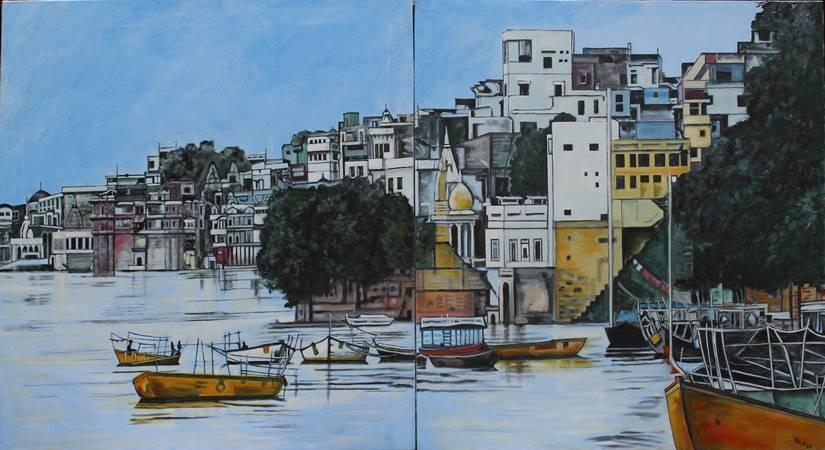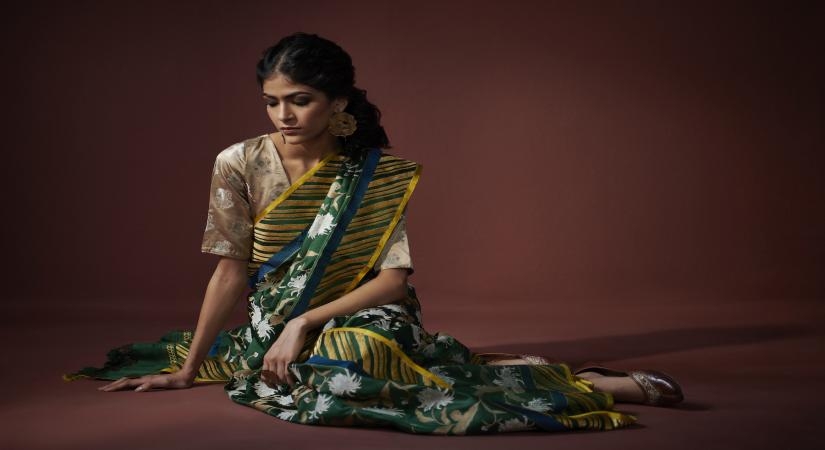In the words of Sanjeev Chandra, Professor at the University of Toronto, an author of several books, and a keen interest in Indian history and culture…reports Asian Lite News
Mamta Malhotra, a visual artist based in Benaras, will exhibit her work in Mumbai from November 15 to November 21 at the Jehangir Art Gallery. The exhibition is named “Kashi Yatra.”
She examines the interactions of line, colour, form, and texture in “Kashi Yatra” through abstract studies and urban environments.
Her creations demonstrate how Varanasi, a kaleidoscope of colour and texture, serves as true inspiration. She was inspired to paint cityscapes that highlight Varanasi’s fleeting beauty and fragility while evoking the intense vitality of an ancient and vibrant lifestyle by the juxtaposition and contrast of the urban fabric, a rich culture, and a timeless way of life that was rooted in nature.
The oldest continuously inhabited city in the world, Kashi, serves as a ray of hope in these trying times. Although Varanasi, which has stood on the banks of the Ganga since the beginning of time, has been ravaged and pillaged, and many of its magnificent temples have been destroyed, it still stands vivaciously as a testament to human tenacity and faith. Mamta is inspired by the ageless vitality and optimism for humanity that can be witnessed throughout history in this city-the order behind the chaos. Even though the urban landscape evolved from ancient architecture and technology, it still seems incredibly relevant to our day and age.
Varanasi is a real illustration of how much people appreciate nature and how much they comprehend how existence depends on the delicate harmony between the earth, her inhabitants, the seasons, and the goodness of nature. This symbiotic relationship of simplicity, beauty, and balance seems to be eroding with time. The old, the new, and future promise are all present in this distinctive Benarasi skyline. Benaras is deeply established in its customs, religion, and masti. With this program, we consider how to best preserve our essence while embracing the future and respecting nature and the environment as the nation moves toward urbanization.
In the words of Sanjeev Chandra, Professor at the University of Toronto, an author of several books, and a keen interest in Indian history and culture.
“Every great city needs an artist to chronicle its wonders, for it takes the talents of an artist to capture the spirit of a city, to reveal its hidden corners and acquaint us with its inhabitants. Mamta Malhotra is the best guide to Benaras that one can wish for, for her paintings portray as never before the faces of the people in its streets, the soaring rooflines of its ancient temples, and the beauties of the Ganga ghats. Every canvas is infused with the vibrant colours and whirl of life that have drawn pilgrims to Benaras for millennia. Malhotra’s art gives us a glimpse into the soul of a city that has been hallowed ground since humanity first walked on this land.”
ALSO READ-Sacha Jafri teams up with Artfi





